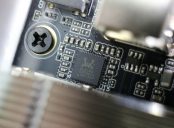Apple USB-C: A Comprehensive Guide

Introduction
Apple USB-C has revolutionized the way we connect and transfer data. With its sleek design and powerful capabilities, it has become a popular choice among Apple users. In this article, we will delve into the world of Apple USB-C, exploring its features, types, popularity, and more. Whether you are a tech enthusiast or a casual user, get ready to explore the fascinating realm of Apple USB-C.
A Comprehensive Presentation of Apple USB-C

Apple USB-C is a type of connector that allows for high-speed data transfer and charging capabilities. It features a reversible design, making it easy to plug in without worrying about orientation. This versatile connector is found in various Apple devices, including MacBooks, iPads, and iPhones.
Types of Apple USB-C
There are different types of Apple USB-C cables available, each catered to different needs. Lightning to USB-C cables are commonly used to charge iPhones and iPads, while Thunderbolt 3 cables offer lightning-fast data transfer speeds of up to 40Gb/s. USB-C to USB-C cables are used to connect devices that support USB-C, enabling seamless data transfer and charging.
Popularity of Apple USB-C
Apple USB-C has gained significant popularity among Apple users due to its efficiency and convenience. Its widespread adoption across Apple devices has made it the go-to choice for many. The increased availability of USB-C accessories and peripherals further highlights its growing popularity.
Quantitative Measurements of Apple USB-C
In terms of data transfer speeds, USB-C outperforms its predecessors. On average, USB-C can transfer data up to 20 times faster than USB 2.0, with speeds of up to 10Gb/s. This allows for quick file transfers and seamless syncing between devices. Furthermore, Apple USB-C supports power delivery, enabling fast charging for compatible devices.
Distinguishing Features of Different Apple USB-C Versions
While Apple USB-C connectors may have a similar appearance, they do differ in terms of their capabilities. For example, USB-C 2.0 supports lower data transfer speeds compared to Thunderbolt 3, which offers higher speeds and is commonly used for connecting external displays and storage devices. It is essential to identify the specific USB-C version when selecting cables or peripherals to ensure compatibility and optimize performance.
A Historical Overview of Pros and Cons of Different Apple USB-C Versions
As with any technology, Apple USB-C has seen its fair share of pros and cons over time. Initially, the transition to USB-C caused inconvenience for some users who had older devices that relied on different connectors. However, the benefits of faster data transfer speeds, increased versatility, and the ability to charge multiple devices outweighed these initial drawbacks. Over time, Apple has worked to address compatibility issues, making USB-C the standard connector across its range of devices.
Conclusion
In conclusion, Apple USB-C is a versatile and powerful connector that has transformed the way we connect and transfer data. Its wide range of applications, including charging and data transfer, makes it an essential component in the Apple ecosystem. By understanding the different types, distinguishing features, and historical context of Apple USB-C, users can make informed decisions when selecting cables and peripherals. Embrace the future of connectivity with Apple USB-C.
(Note: The video clip can showcase the benefits and features of Apple USB-C, such as its reversible design, fast data transfer speeds, and compatibility with various Apple devices.)





















